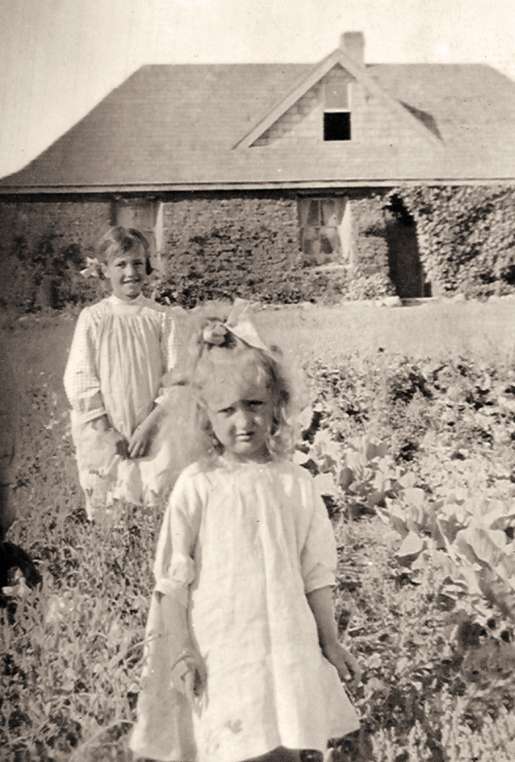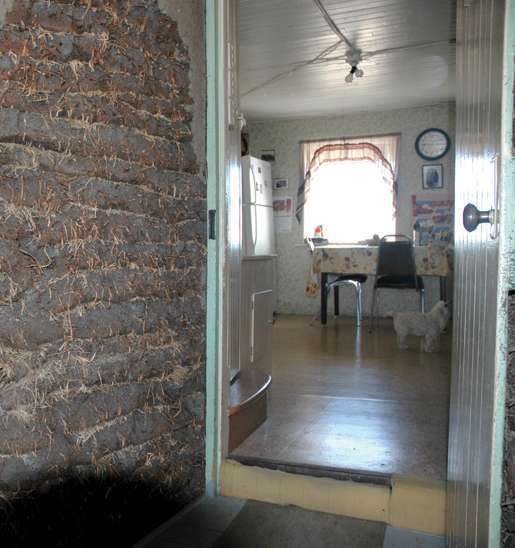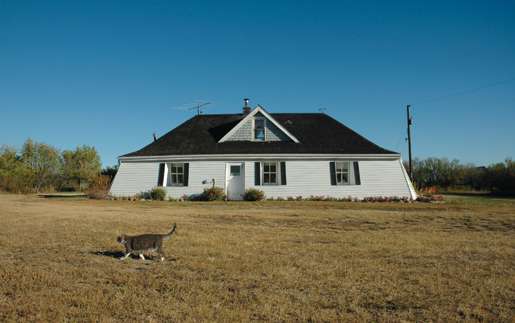

 19
19




 12
12




"When the whole world is running towards a cliff, he who is running in the opposite direction appears to have lost his mind." C.S. Lewis
Visit https://themaineingredient.com for organic, premium dried culinary herbs that are grown, processed, and packaged in the USA.

 13
13




they are constructed of branches of trees covered with sods;

According to Historic Environment Scotland, drystone was often used to coat the interior turf wall to stop animals damaging the surface, whether by rubbing or licking for salt.
However, drystone was later used on the outside to meet growing regulations from landowners, who could then claim their tenants were housed in ‘stone-built homes’.
Rules for tenants on Lewis Estate in 1879 insisted ‘the dwelling houses to be erected by the tenants ... shall be of stone and lime, or stone and clay, pinned and hurled with lime, or with stone on the outer face and turf and sod on the inside’.
However, according to HES, putting drystone on the exterior of the turf house held water, softened the surface and created erosion.
Turf as a building material is enjoying revived interest in Scotland given its ability to waterproof and insulate properties
How Permies works: https://permies.com/wiki/34193/permies-works-links-threads
My projects on Skye: The tree field, Growing and landracing, perennial polycultures, "Don't dream it - be it! "

 9
9




 10
10




Invasive plants are Earth's way of insisting we notice her medicines. Stephen Herrod Buhner
Everyone learns what works by learning what doesn't work. Stephen Herrod Buhner












 7
7





“he found a slough where the grass was high and cut the sod three inches thick. Dad decided he would build the walls four feet thick at the bottom, seven feet high, then taper them to three [at the top],” said Gardiner. But the secret wasn’t just in making the walls larger. The technique was most important. “Every time he’d put a layer of sod on he’d [layer] it…so you didn’t have the cracks coming together,” she explained. And, critically, “he hollowed out the top of every layer.” When the sod dried it would crumble in on itself—toward the centre of gravity—and not fall away to the outside or inside of the wall.
the exterior walls were covered with growing vines for protection from the elements. “But the wind and rain gradually eroded it, so finally he put boards around,” she said. Later these were replaced with shingles, then asphalt and finally the current vinyl siding.


How Permies works: https://permies.com/wiki/34193/permies-works-links-threads
My projects on Skye: The tree field, Growing and landracing, perennial polycultures, "Don't dream it - be it! "
 7
7





 6
6




Maieshe Ljin wrote:One thing about sod that would make it good for waterproofing is that while it might be a porous material, it is alive and actively growing, so the grasses should be able to drink at least some of the water before it becomes a nuisance to the house.

|
Come have lunch with me Arthur. Adventure will follow. This tiny ad:
Homestead Pigs Course
https://permies.com/wiki/365748/Homestead-Pigs
|




